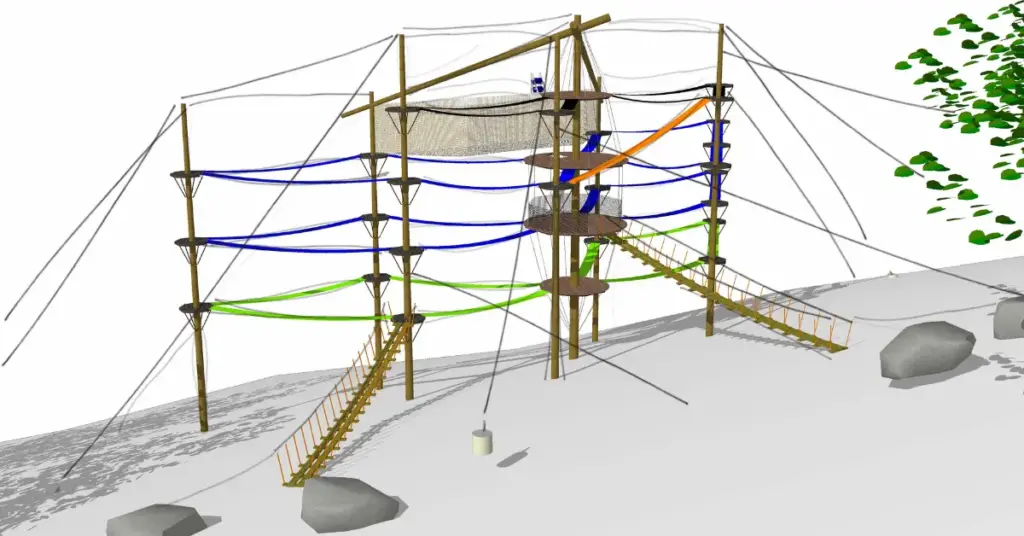Building a new challenge course or zip line is an adventure filled with possibilities and the potential for more than a few pitfalls. At Challenge Towers, we understand the excitement, complexity, and occasional anxiety accompanying this process. Our guide to Building an Aerial Adventure Park outlines the step-by-step process of designing and installing challenge-based facilities. This blog delves deeper into the initial stages of adventure park planning and ropes course design, focusing on project conceptualization and site assessment.
Understanding Conceptualization in Ropes Course Design
Site assessment goes hand-in-hand with designing ropes courses and aerial parks. The suitability of a location for a challenge course or zip line installation can’t be overstated. Many projects require an in-person site visit to collect valuable information necessary for the design proposal. During a Challenge Towers site visit, we work through a comprehensive checklist for evaluating a site’s potential, including soil stability, local climate, and existing vegetation. Other factors we consider include:
- Topography: The lay of the land influences the type and scope of activities you can offer. Sloping terrains might be perfect for zip lines, while flatter areas could be ideal for challenge courses.
- Accessibility: What will it take for a crew to complete the project at your site? Confirming access options for installation machinery and materials is necessary to confirm site feasibility and project costing.
- Environmental Impact: Sustainability is key in adventure park planning. We help assess your course’s environmental impact and strive for a design in harmony with its setting.

Maximizing Managed Risk
When it comes to challenge and ropes course design, adventure and risk management are two sides of the same coin. Good risk management starts during project conceptualization. The design should challenge participants while minimizing hazards and promoting consistent and efficient operational practices. This balance is achieved through adherence to design standards and consistent evaluation of risk factors.
Budgeting and Resource Planning
While this topic will be expanded in a future blog, it’s important to touch on the financial and resource aspects of ropes course design and building a challenge course. It’s essential to align your project goals with a realistic budget. Similar facilities built on different sites and for different audiences can have very different final costs. Challenge Towers identifies the cost variables specific to your project, from soil conditions and permits to engineering requirements, site conditions, and operations equipment. We deliver estimated pricing with each design proposal and work to finalize contract pricing as we move through the design and engineering project phases.
Like any adventure, building a challenge course is a journey that requires careful planning and expert guidance. From dreaming up a concept to the realities of site assessment, each step is crucial in creating an experience that meets your operational goals.
Ready to turn your vision into reality? Learn more about our custom courses and parks or connect with a Challenge Towers Professional today and take the first step towards building a challenge course. Let’s create something extraordinary together!
